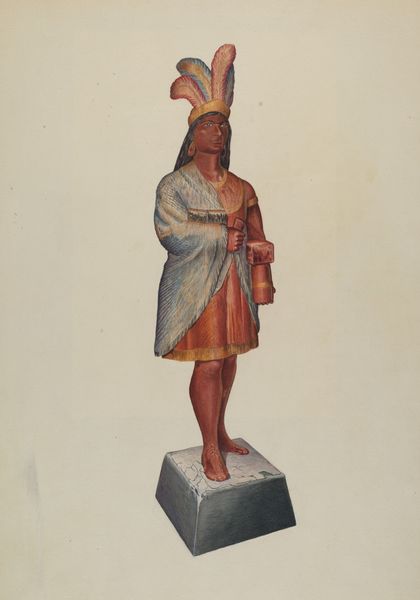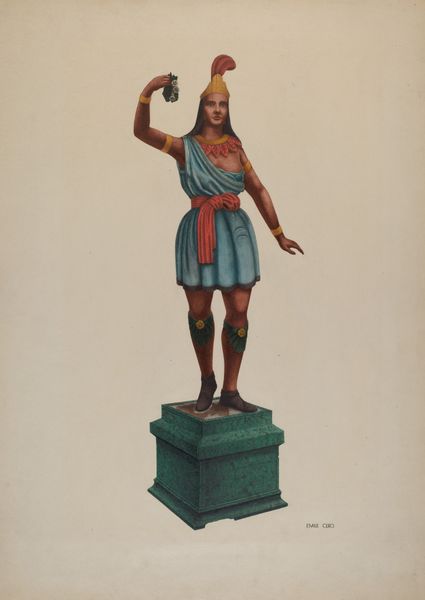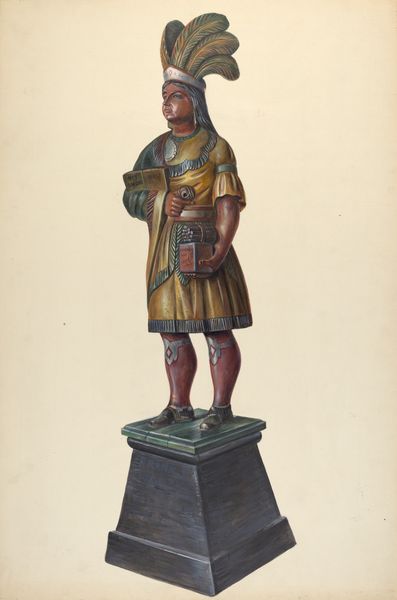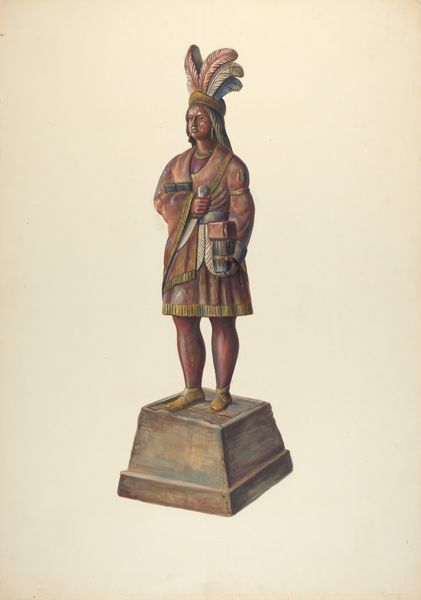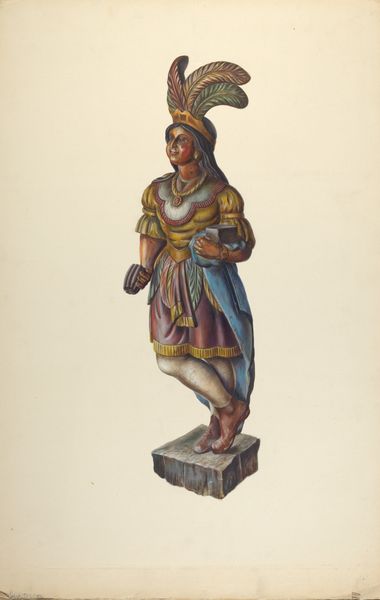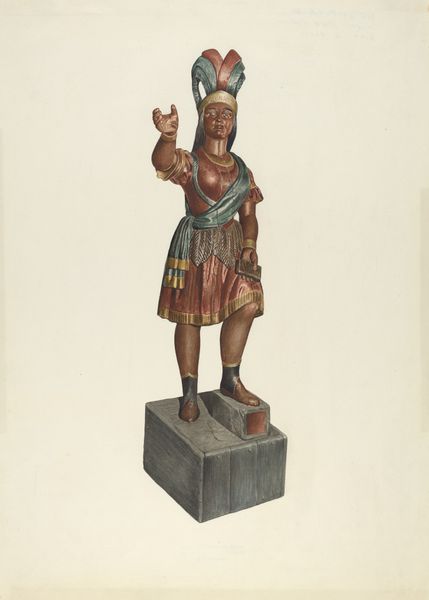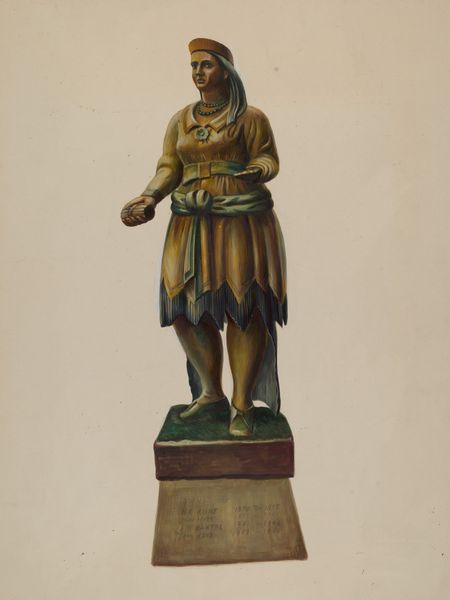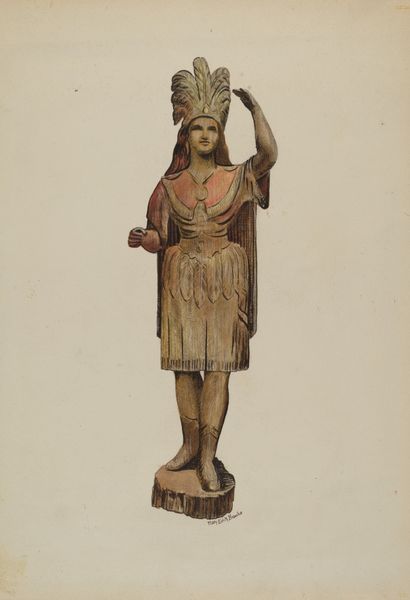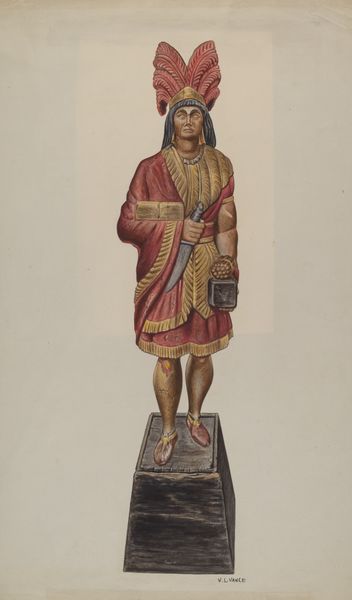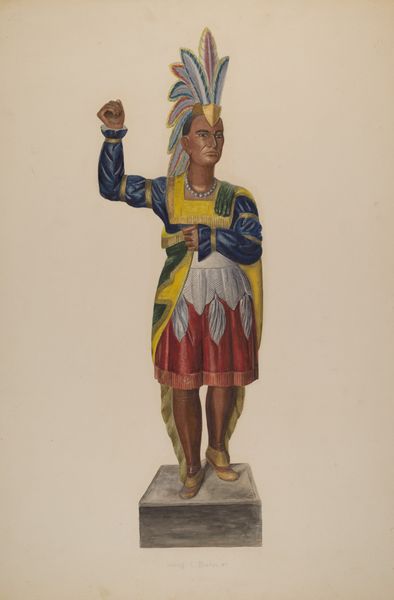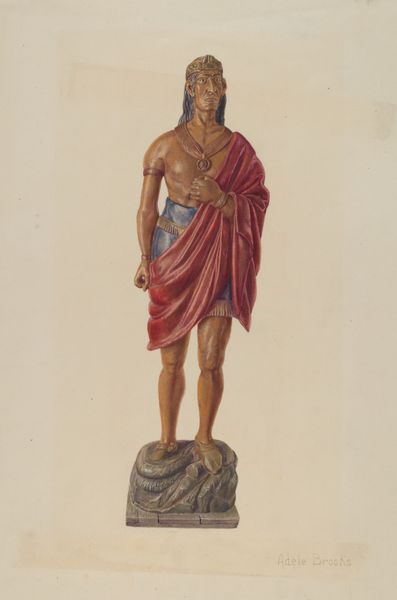
painting, watercolor, sculpture
#
portrait
#
painting
#
charcoal drawing
#
figuration
#
watercolor
#
folk-art
#
sculpture
#
watercolor
Dimensions: overall: 41.4 x 30.2 cm (16 5/16 x 11 7/8 in.)
Copyright: National Gallery of Art: CC0 1.0
Curator: Here we have Charles Bowman’s “Cigar Store Indian,” estimated to date around 1937. It seems to be a rendering in watercolor, perhaps preparatory for a sculpture, showing a Native American figure atop a wooden plinth. Editor: The initial feeling is definitely… complicated. There's a surface level of exoticism but it hints at something more, doesn’t it? The figure has this almost defiant upward gaze despite, or maybe because of, its apparent immobility. Curator: Indeed. Bowman's work highlights a fascinating, yet deeply problematic chapter in American history. These figures, typically rendered as stoic, often romanticized stereotypes, were ubiquitous advertisements, particularly in front of tobacco shops from the mid-19th to early 20th century. Editor: Exactly, the figure exists at the intersection of advertising, cultural appropriation, and racial caricature. How does this kind of imagery function within a culture? What's being sold, really? The cigars or an idea of indigeneity? Curator: A loaded question, certainly. Their function served to visually associate tobacco with the exotic "other," creating an association of far away origins with a commercial product, reinforcing notions of the “savage noble.” It raises vital discussions regarding labor and who, if anyone, benefits from said romantic depiction. Editor: And beyond labor, we should address its use as a colonial tool; consider what images get memorialized or reproduced for mass consumption. Here we confront our role, as institutions, to reconcile historical context alongside its troubling implications. Curator: Absolutely. To further your observation, the placement itself carries so much significance— standing silently outside the tobacco stores as a physical symbol that helped construct and then perpetuate damaging racial narratives. These figures are not just aesthetic artifacts, but evidence of deeply embedded social and commercial structures. Editor: So what remains? Perhaps the piece offers us an opportunity to confront the ways that colonialism's visual languages persist today? The very act of pausing here prompts an active examination and critique. Curator: An important consideration, indeed. Bowman’s image offers a space for critical analysis of these complex themes, inviting reflection on their reverberations into contemporary society. Editor: I am taking that thought with me! Thanks.
Comments
No comments
Be the first to comment and join the conversation on the ultimate creative platform.

